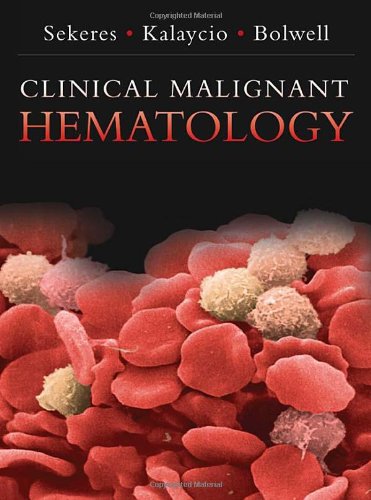

Most ebook files are in PDF format, so you can easily read them using various software such as Foxit Reader or directly on the Google Chrome browser.
Some ebook files are released by publishers in other formats such as .awz, .mobi, .epub, .fb2, etc. You may need to install specific software to read these formats on mobile/PC, such as Calibre.
Please read the tutorial at this link. https://ebooknice.com/page/post?id=faq
We offer FREE conversion to the popular formats you request; however, this may take some time. Therefore, right after payment, please email us, and we will try to provide the service as quickly as possible.
For some exceptional file formats or broken links (if any), please refrain from opening any disputes. Instead, email us first, and we will try to assist within a maximum of 6 hours.
EbookNice Team

Status:
Available0.0
0 reviewsThe only comprehensive guide to the clinical management of hematologic and lymphatic cancers
4 STAR DOODY'S REVIEW! "This will be an ideal and a must-have book for anyone involved in the daily care of patients with hematologic malignancies. It would be particularly useful for physicians-in-training trying to make sense of the ever more complicated treatment plans for these patients....This is a unique book that provides easily accessible information that would be useful to almost any practicing oncologist or hematologist."-- Doody's Review Service
Filling an unmet need in the clinical literature, this commanding, just-in-time reference sheds light on the full spectrum of cancers in the blood, bone marrow, and lymphatic system (leukemia, lymphoma, myeloma). Clinical Malignant Hematology is edited by staff members from the renowned Taussig Cancer Center at the Cleveland Clinic, which has pioneered some of the most important clinical discoveries and treatment trends in recent years.
Look inside and you'll see a consistent, unified patient management strategy in each chapter, as well as a streamlined three-section format that expertly examines ontogeny and physiology of blood cells, myeloid neoplasia, and lymphoid neoplasia. You'll also find never-before-published perspectives and precise recommendations for dosing and other critical areas that reflect the latest scholarship of this increasingly vital field.
Features